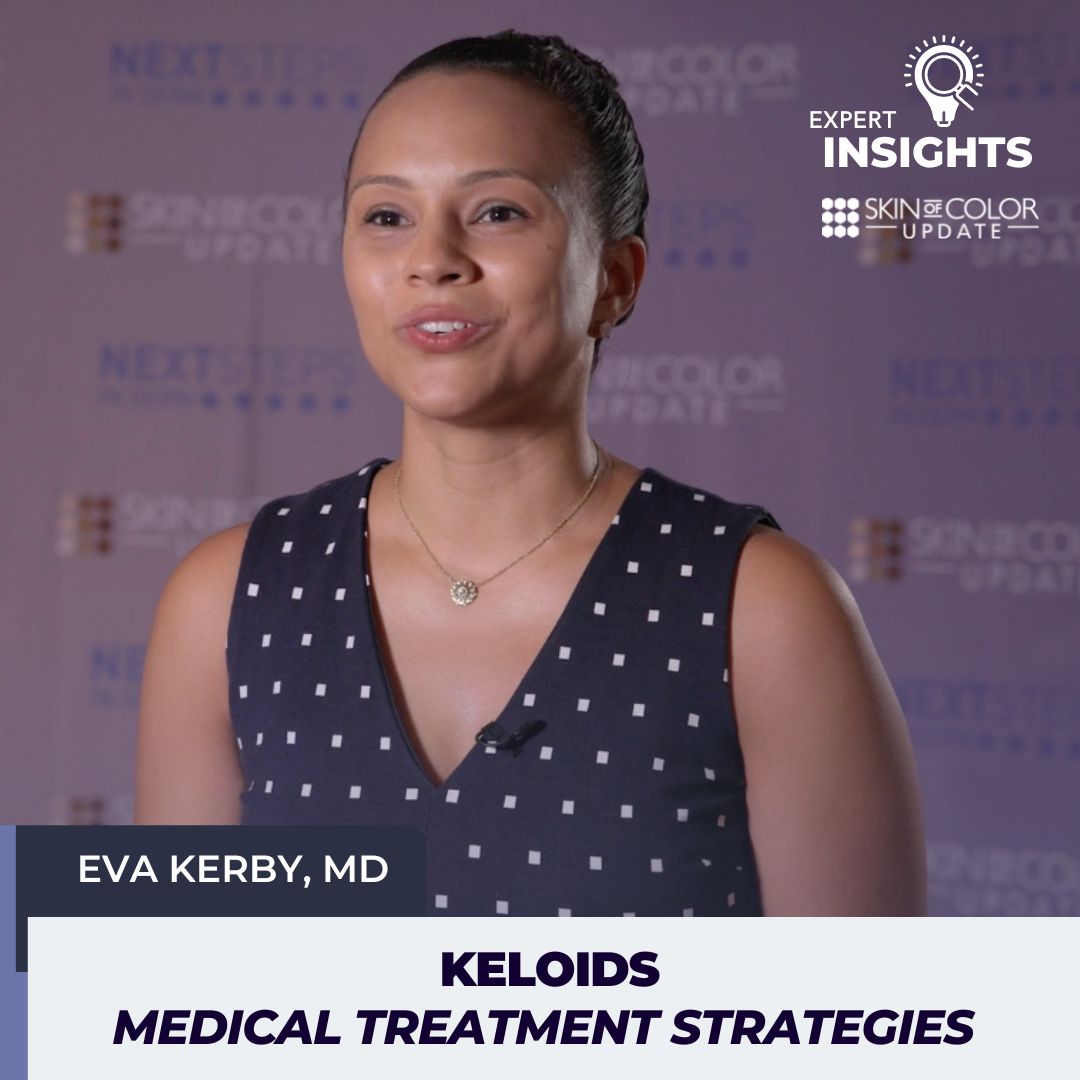Next Steps in Derm, in partnership with Skin of Color Update, interviewed Dr. Eva Kerby, assistant professor of clinical dermatology at Weill Cornell Medical College. Dr. Kerby shares her preferred medical treatment options for keloids, and why it’s important to set treatment expectations with patients. Watch as Dr. Kerby shares tips for good injection technique and how to treat larger, nodular keloids. If you don’t have access to procedural therapies, or if you are interested in combining medical and procedural therapies in treating keloids, this video is for you.
Further Reading
If you want to read more about the medical treatment of keloids, check out the following articles published in the Journal of Drugs in Dermatology:
Nonresponse and Progression of Diffuse Keloids to Dupilumab Therapy
ABSTRACT
Th2 cytokines, including IL-4 and IL-13, have been shown to increase TGFβ, promoting fibrosis. A recent study showed keloid improvement in one patient after administration of Dupilumab, an IL-4 receptor alpha-antagonist, for his/her atopic dermatitis. Here, we present two 17-year-old patients with diffuse keloids without improvement after three months of Dupilumab treatment, with one patient experiencing clinical worsening. It is currently unknown if Th2 cytokine blockade in patients with keloids reduces TGFβ synthesis or activation. Future studies are needed to investigate the utility of Th2 cytokine blockade as a potential treatment option for keloids.
A Randomized, Double-Blind, Active- and Placebo-Controlled Trial Evaluating a Novel Topical Treatment for Keloid Scars
ABSTRACT
Keloid and hypertrophic scars are fibroproliferative disorders resulting from abnormal wound healing in genetically susceptible individuals. Current therapies are often ineffective. Kynurenine shows promise as a topical treatment for keloids and hypertrophic scars. In this study, healthy adult male and female subjects seeking treatment for mature keloid scars were enrolled. Subjects were randomized in double-blind fashion to receive kynurenic acid 0.5% (FS2) cream (Group 1), an active onion extract comparator treatment (Group 2), or the inactive vehicle (Group 3). Each treatment was applied twice-daily. Qualitative assessments were made using the Vancouver Scar Scale (VSS), as well as the Patient and Observer Scar Assessment Scales (POSAS). Among subjects in Group 1, there was a substantial decrease in mean PGSS scores after 30 days of treatment that continued to trend downward, becoming significant versus Group 2 at days 90 and 180 (P<0.05) and versus Group 3 at day 180 (P<0.01). Based on mean VSS scores, subjects in Group 1 achieved beneficial effects that became significant versus Group 2 at day 90 (P<0.01), day 120 (P<0.05), and day 180 (P<0.001) and versus Group 3 at day 180 (P<0.05). There were no significant improvements in Groups 2 or 3. There were no adverse events or local skin reactions. The twice-daily application of FS2 Cream represents a potentially new and effective treatment for mature keloid scars.
Intralesional and Laser-Assisted 5-Fluorouracil in Dermatologic Disease: A Systematic Review
ABSTRACT
5-fluorouracil has proven to be an effective therapy in the treatment of a variety of dermatologic conditions. Approved by the United States Food and Drug Administration for the topical treatment of actinic keratoses and superficial basal cell carcinoma, 5-fluorouracil has also demonstrated efficacy in the treatment of a variety of other dermatologic diseases. While best known for its use as a topical medication, 5-fluorouracil can also be delivered intralesionally for the treatment of dermatologic disease. Recently, laser-assisted modalities for increased delivery of 5-fluorouracil have also been described METHODS: A search of the MEDLINE standard computer database, MEDLINE advanced database, and EMBASE database was conducted. RESULTS: 38 articles met criteria for inclusion in this review. These articles represented 14 randomized controlled trials and 24 case series. Each article was reviewed and summarized. The main limitation of this review is the limited number of large randomized controlled trials, as well as the non-uniformity in treatment regimens between studies. DISCUSSION: Intralesional and laser-assisted 5-fluorouracil are used in a variety of dermatologic disease processes with a wide range of efficacy and levels of evidence. Based on extent and level of evidence, our disease-specific systematic review found that the evidence is strongest for intralesional 5-FU use in the treatment of keloids, hypertrophic scars, and keratoacanthomas. This review serves as a comprehensive summary of intralesional and laser-assisted 5-fluorouracil use in dermatology.
Did you enjoy this video interview? Find more here.


